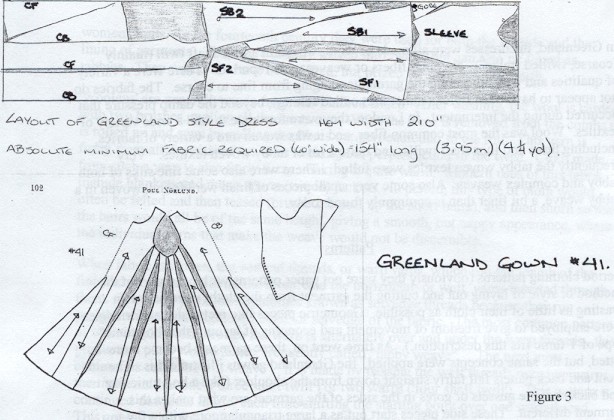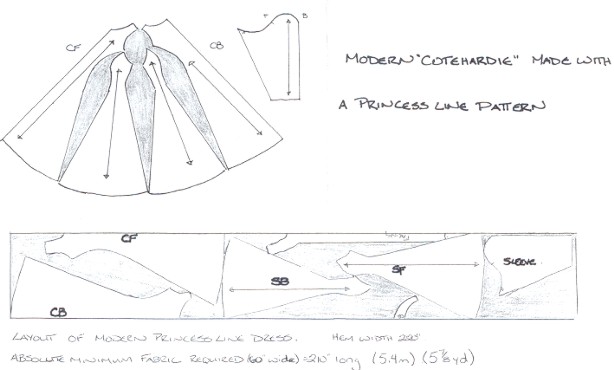PatternsPeriod clothing patterns (obviously they were not paper patterns we have now, but the method or style of laying out and cutting the garment from the cloth) were based on wasting as little of their cloth as possible. Geometric pieces like rectangles and triangles were employed to give freedom of movement and economy of layout (the "bog tunic" type of T tunic fits this description.). As time went on, these garments became more fitted, but the same concepts were applied: the Greenland gowns illustrate this. The front and back panels fall fairly straight down from the shoulder (like a bog tunic front and back) but the gussets or gores in the sides of the garment are what makes this garment different. These side pieces start out as a large triangular gore with a flat top that extends to the armpit. The top section gets modified by fitting. When the fittings are complete, the gown is slightly hourglass shaped (just like we are!) on top, with the lower part staying like a regular skirt gore. The pieces are also shaped at the top by the armpit area. They get rounded into a fairly modern looking armhole. The sleeve pattern still starts as a rectangle, but a gore has been added to the top so that it will fit more easily into the armhole. This is an economical use of fabric which uses only about 4 m of cloth (after fulling) For pictures of two of the Greenland garments,please see Gown 38 and Gown 41. In contrast, a modern pattern that is frequently used to get a similar look to the period cotehardie (the princess line pattern) uses 5.5-6 m of cloth. Its pattern employs modern tailoring techniques for fitting, including having the seam line fall over the bust point. The front panel of a princess line pattern falls fairly straight from the shoulder only to about halfway down the armhole. It then cuts diagonally downwards and inwards toward the center of the body to travel to the bust point (nipple) and then goes down to the waist then flares out at the hips. The side front panel therefore must be very curved in order to reach in from the side seam, up the armhole, and then out to the bust point only to come in again at the waist. Side front/ back skirt pieces also tend to distribute their flair equally towards the front / back and the side seams making them very wide at the base (and therefore wasting a lot of fabric).
|

